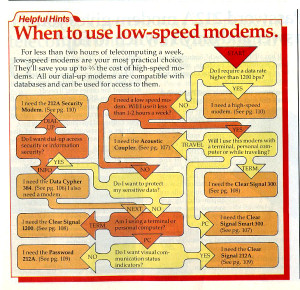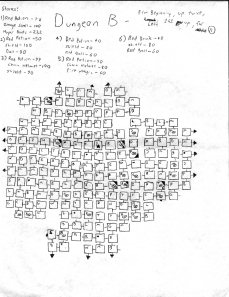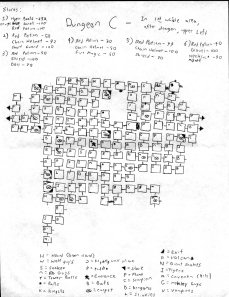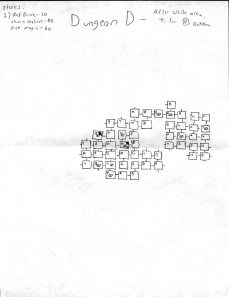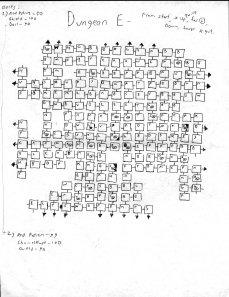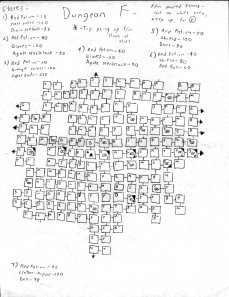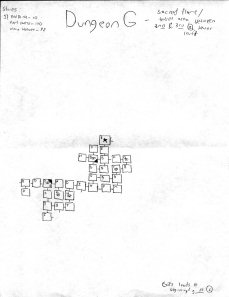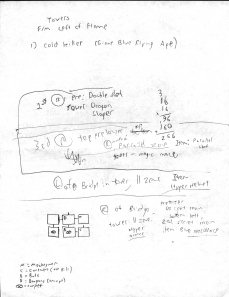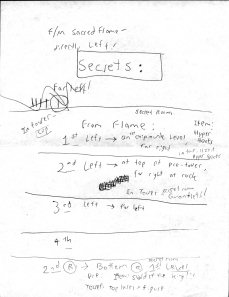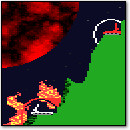Archive for January, 2006
RedWolf’s Underwhelming Microprocessor and BIOS Collection (With a Nice Case)
Sunday, January 29th, 2006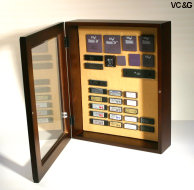 Apologies for the lack of updates recently. Alas, life surely gets in the way when you’re running a free “blogazine” in your spare time. Some ambitious articles are in the works, so stay tuned. Meanwhile, I’ve been meaning to share this with VC&G readers for months: it’s my somewhat underwhelming microprocessor and PC BIOS collection. Why underwhelming? Because it’s composed mostly of easy to find x86-compatible processors so far. I am almost more proud of the case than its contents at the moment (cases like the one pictured can be had cheaply at places like Target or craft stores for around $12-$15 US). I could add some more interesting CPUs if I was willing to rip the brains out of my old computers (which, in general, I’m not). But I do have something like six nasty C-64s sitting around, so I should at least add a 6510 to my collection. My favorite part is the 64-pin Motorola 68000 chip that I painstakingly de-soldered from a surplus Mac Plus motherboard some years ago. I’ve always wanted one of those loose because of their unique package size (not among 68000s, but among DIPs in general).
Apologies for the lack of updates recently. Alas, life surely gets in the way when you’re running a free “blogazine” in your spare time. Some ambitious articles are in the works, so stay tuned. Meanwhile, I’ve been meaning to share this with VC&G readers for months: it’s my somewhat underwhelming microprocessor and PC BIOS collection. Why underwhelming? Because it’s composed mostly of easy to find x86-compatible processors so far. I am almost more proud of the case than its contents at the moment (cases like the one pictured can be had cheaply at places like Target or craft stores for around $12-$15 US). I could add some more interesting CPUs if I was willing to rip the brains out of my old computers (which, in general, I’m not). But I do have something like six nasty C-64s sitting around, so I should at least add a 6510 to my collection. My favorite part is the 64-pin Motorola 68000 chip that I painstakingly de-soldered from a surplus Mac Plus motherboard some years ago. I’ve always wanted one of those loose because of their unique package size (not among 68000s, but among DIPs in general).
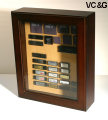 So far in my collection I have the following (from left to right, top to bottom): Intel A80486SX-25, Intel A80486DX-33, Intel A80386DX-25 (x2), Intel P8080A, Intel D80287-10 (co-processor), IIT 3C87-40 (386 clone, I think), Intel R80286-10, Intel CG80286-8, Intel A80387DX-25 (co-prossesor), Motorola MC68000P8. Then I have a bunch of different PC BIOS chips that aren’t all that amazing — the only notable ones are the Phoenix 3.10 chips, and the Mac Plus ROMs (which obviously aren’t BIOSes, but I don’t know where else to put them).
So far in my collection I have the following (from left to right, top to bottom): Intel A80486SX-25, Intel A80486DX-33, Intel A80386DX-25 (x2), Intel P8080A, Intel D80287-10 (co-processor), IIT 3C87-40 (386 clone, I think), Intel R80286-10, Intel CG80286-8, Intel A80387DX-25 (co-prossesor), Motorola MC68000P8. Then I have a bunch of different PC BIOS chips that aren’t all that amazing — the only notable ones are the Phoenix 3.10 chips, and the Mac Plus ROMs (which obviously aren’t BIOSes, but I don’t know where else to put them).
If anybody wants to donate some CPUs to the VC&G Microprocessor collection, let me know. 🙂 Also, if you have a collection yourself, feel free to show us some pictures or discuss it in the comments.
VC&G Exclusive:
Secret Deadly Towers Maps Revealed!
Wednesday, January 11th, 2006
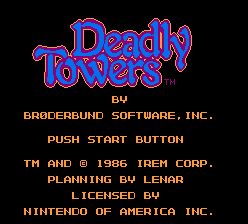 The game Deadly Towers for the NES has always held a special place of mystery and fascination in the minds of both myself and a close friend of mine. I remember playing it while I was sick from school long ago, and, believe it or not, being completely immersed in the atmosphere of the game. I now suspect that the game’s intriguing intro music had much to do with it, giving the game a much more epic feel in my mind than actually exists on cartridge. Also, I was always mystified by the myriad small black windows on the tower backgrounds, which always made want to peek inside and see what was in there.
The game Deadly Towers for the NES has always held a special place of mystery and fascination in the minds of both myself and a close friend of mine. I remember playing it while I was sick from school long ago, and, believe it or not, being completely immersed in the atmosphere of the game. I now suspect that the game’s intriguing intro music had much to do with it, giving the game a much more epic feel in my mind than actually exists on cartridge. Also, I was always mystified by the myriad small black windows on the tower backgrounds, which always made want to peek inside and see what was in there.
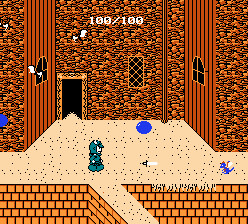 My overwhelming nostalgic love for the game is kinda funny because, years later, upon seeing if there were any fan sites for Deadly Towers, I realized that everyone other than me and my friend seems to utterly hate this game. In fact, the ever-colorful Seanbaby said it was the #1 worst NES game of all time on his site. Wow. I definitely wouldn’t go that far (but of course, Seanbaby always goes as far as he can — he probably wipes his butt with Deadly Towers cartridges…just because he can). But make no mistake: Deadly Towers is no gem, either. One of the reasons it is loathed by many is that it is insanely frustrating and difficult. Some of the first enemies you encounter in the game require you to stand in the same spot for a minute, hitting them about fifty times with your wimpy starting sword to kill them. Most of us who played it at all would have killed ourselves long ago if not for the famous “EF or FE Code” (thank you, Nintendo Power) that gives you one of the bells pre-burned and the best armor and weapons (To use the code, start the game, die, then add “EF” or “FE” to the start of your password). Using that trick, the game actually becomes bearable to play for someone who’s not swimming in mystical nostalgia.
My overwhelming nostalgic love for the game is kinda funny because, years later, upon seeing if there were any fan sites for Deadly Towers, I realized that everyone other than me and my friend seems to utterly hate this game. In fact, the ever-colorful Seanbaby said it was the #1 worst NES game of all time on his site. Wow. I definitely wouldn’t go that far (but of course, Seanbaby always goes as far as he can — he probably wipes his butt with Deadly Towers cartridges…just because he can). But make no mistake: Deadly Towers is no gem, either. One of the reasons it is loathed by many is that it is insanely frustrating and difficult. Some of the first enemies you encounter in the game require you to stand in the same spot for a minute, hitting them about fifty times with your wimpy starting sword to kill them. Most of us who played it at all would have killed ourselves long ago if not for the famous “EF or FE Code” (thank you, Nintendo Power) that gives you one of the bells pre-burned and the best armor and weapons (To use the code, start the game, die, then add “EF” or “FE” to the start of your password). Using that trick, the game actually becomes bearable to play for someone who’s not swimming in mystical nostalgia.
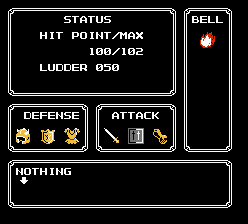 So imagine my surprise when, back in 2003, my best friend called me up and announced that he was going to beat Deadly Towers — without cheating. “Gasp! Are you insane, man?!” I stumbled, almost dropping the phone as I fell from my chair. No, he replied…he took it as a challenge — a challenge to his gaming might, endurance, and ability. He wanted to be one of the twelve people in the world to actually complete the game as intended (ten of which are former Japanese grade-schoolers, no doubt, who seem to have a sadistic drive to consume even the most insanely difficult games). With no strategy guides or maps available to guide him, not even on our precious Internet (save for the 1st dungeon map in the manual), he set out on his mission. I set out along with him, playing it simultaneously as we talked on the phone, but I eventually gave up half-way through. It was just too tedious for me. Over the next month, he not only completed the game entirely, but mapped all of its completely useless dungeons (which you don’t even have to enter to beat the game), and found most, if not all, of the secret exits in the towers, which contain special weapon upgrades and the like.
So imagine my surprise when, back in 2003, my best friend called me up and announced that he was going to beat Deadly Towers — without cheating. “Gasp! Are you insane, man?!” I stumbled, almost dropping the phone as I fell from my chair. No, he replied…he took it as a challenge — a challenge to his gaming might, endurance, and ability. He wanted to be one of the twelve people in the world to actually complete the game as intended (ten of which are former Japanese grade-schoolers, no doubt, who seem to have a sadistic drive to consume even the most insanely difficult games). With no strategy guides or maps available to guide him, not even on our precious Internet (save for the 1st dungeon map in the manual), he set out on his mission. I set out along with him, playing it simultaneously as we talked on the phone, but I eventually gave up half-way through. It was just too tedious for me. Over the next month, he not only completed the game entirely, but mapped all of its completely useless dungeons (which you don’t even have to enter to beat the game), and found most, if not all, of the secret exits in the towers, which contain special weapon upgrades and the like.
So without further delay, I present to you, published for the first time ever on the Internet (in English, anyway), The Secret Maps of Deadly Towers [cue mind-blowing music]. And what’s more, instead of spending countless hours transcribing them into some legible computerized format, I am presenting them in the artist’s original hand, for extra charm and authenticity. Their format might also give you more of an idea as to what an epic accomplishment this really is. The intrepid artist’s name? Ben Johnson. From now on, let these be known as The Johnson Maps.
Yep, those were the days: when we all had to make our game maps by hand.
How come there’s no “Dungeon A” map, you ask? Because it’s already mapped in the Deadly Towers manual. Oh, and the maps are in Adobe Acrobat PDF format for easy printing (didn’t want you to have to fiddle with printing letter-sized JPEGs, you know).
If anyone else actually likes this game, speak now, or forever will Deadly Towers roast in the pits of Internet game-punditry hell!
Shortcut to Booting MS-DOS on the Compaq IA-1
Tuesday, January 10th, 2006 Ah…more on my continuing adventures with the not-so-vintage, but very much obsolete Compaq IA-1. I got Midori Linux running long ago, but I’ve since longed to turn this thing into an MS-DOS machine, maybe to play some old shareware games with. The hardest part of booting MS-DOS on the Compaq IA-1 is making a bootable partition on a compact flash card. The IA-1 treats its compact flash slot it has like a regular ole IDE hard drive connection, as compact flash cards have a native mode that emulates IDE hard drive behavior (and therefore, the compact flash, when in use, is not hot-swappable). The problem arises when you try to format a compact flash card using a common USB compact flash adapter: Windows treats the card as a removable drive, and thus, no low-level formatting options (like making it bootable with system files on it) are available.
Ah…more on my continuing adventures with the not-so-vintage, but very much obsolete Compaq IA-1. I got Midori Linux running long ago, but I’ve since longed to turn this thing into an MS-DOS machine, maybe to play some old shareware games with. The hardest part of booting MS-DOS on the Compaq IA-1 is making a bootable partition on a compact flash card. The IA-1 treats its compact flash slot it has like a regular ole IDE hard drive connection, as compact flash cards have a native mode that emulates IDE hard drive behavior (and therefore, the compact flash, when in use, is not hot-swappable). The problem arises when you try to format a compact flash card using a common USB compact flash adapter: Windows treats the card as a removable drive, and thus, no low-level formatting options (like making it bootable with system files on it) are available.
Luckily, with a tip from the I-Appliance BBS (an incredible resource, by the way), I found a freely-distributable program from HP that they made to format their Disk-On-Key USB JumpDrives (or whatever they call them newfangled things these days) to make them bootable. And guess what– it seems to work with all removable drives! It’s an incredibly nifty little program; there’s even a DOS version. So how do you get it? Relax, I’ve done all the work for you (impatient people who don’t actually read what I write will no doubt be struggling to find the link — buried in the text!). Here, in this file, is a perfect little Compaq IA-1 MS-DOS kit. Included in the zip file is the aforementioned program installer (for Windows, also includes DOS version), and a directory containing a modified version of MS-DOS that came with Windows 98 (some wise-guy Windows-hata changed all the files to say “MS-DOS 7.10” instead of “Windows 98” when you boot, etc., but it works great). All you have to do is install the program, set up your compact flash adapter, insert a card, run the HP program, and format it to include system files. When it asks which files to include, simply point it to the “MS-DOS 7” directory that is included in the ZIP. There you go.
After that, you’re on your own. I’ve played a few games of Scorched Earth and ZZT on it so far, but it’s a tad bit lacking without any sort of PC speaker sounds. Also, I have absolutely no DOS drivers for any of the IA-1’s built-in hardware, so unless you find them or write your own, you’re stuck to only the most rudimentary of programs. But still, MS-DOS on the IA-1 is a wonderful starting point to bigger and better things. Windows 98 on a microdrive anyone?
Another IA-1 update: I bought a used NetGear MA111 wireless 802.11b wireless network adapter because its chipset is supposedly supported by the drivers built-into the Midori Linux distro I’m using. So far, no luck getting it working, but I haven’t tried everything yet. I’ll mess with it some more later.
Also, here’s a cool PC World article on why Internet Appliances never took off. Tomorrow’s computer collectibles…today! Get ’em before they hit the dump.
Before Gauntlet, There Was…Dandy Dungeon
Wednesday, January 4th, 2006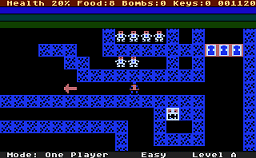 A few weeks ago, while playing through my Atari 800 game collection, I discovered a rare gem that I’d never played before. It quickly made my way into a top ten list of most underrated games of all time (well, for the Atari 800 at least). It’s called Dandy Dungeon, a 1983 release through the Atari Program Exchange (APX) written by then-MIT-student John Palevich. At first glance, it appears to be a Gauntlet clone with primitive graphics (the Gauntlet of which I speak is the 1985 Atari Games arcade release), but it turns out that Gauntlet, not Dandy, is the clone (apparently, Mr. Palevich wasn’t too happy about Ed Logg stealing his design and sued Atari Games over it). I had played another game just like Dandy before for the Atari 7800 called Dark Chambers with exactly the same gameplay, but different graphics. Well, it turns out it’s no co-incidence — Dark Chambers was written by John Palevich as well, commissioned by Atari Corporation later on. As an interesting bit of trivia, Atari Corporation and Atari Games were two separate companies by the time of Gauntlet’s release in 1985.
A few weeks ago, while playing through my Atari 800 game collection, I discovered a rare gem that I’d never played before. It quickly made my way into a top ten list of most underrated games of all time (well, for the Atari 800 at least). It’s called Dandy Dungeon, a 1983 release through the Atari Program Exchange (APX) written by then-MIT-student John Palevich. At first glance, it appears to be a Gauntlet clone with primitive graphics (the Gauntlet of which I speak is the 1985 Atari Games arcade release), but it turns out that Gauntlet, not Dandy, is the clone (apparently, Mr. Palevich wasn’t too happy about Ed Logg stealing his design and sued Atari Games over it). I had played another game just like Dandy before for the Atari 7800 called Dark Chambers with exactly the same gameplay, but different graphics. Well, it turns out it’s no co-incidence — Dark Chambers was written by John Palevich as well, commissioned by Atari Corporation later on. As an interesting bit of trivia, Atari Corporation and Atari Games were two separate companies by the time of Gauntlet’s release in 1985.
So then, why is Dandy so cool? I’ll give you my first three reasons: it plays like a dream, it supports four simultaneous players, and it includes a built-in dungeon editor! The included dungeon designs aren’t very good, I’ll admit, but the ability to design your own dungeons overcomes this weakness (plus, I found six Atari 800 disk images with dungeons designed by different people — see below). Gameplay is smooth, robust, and the controls are great. Also, like in Gauntlet, slugging it out with three other friends is priceless. Finding good four-player games for the Atari 800 is tough, so I’m very happy about this feature.
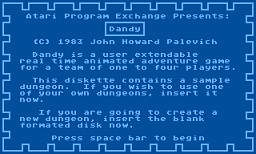 What makes Dandy like Gauntlet and, yet…unlike Gauntlet? First of all, similarities include running around a dungeon shooting monsters with up to four friends, collecting food, using potions (bombs) to kill masses of monsters (who just so happen to come from generators at times). Also, you depart each dungeon level at an exit and descend to a lower dungeon level. The most obvious difference between the two, to me, is the fact that your health doesn’t tick down over time in Dandy like it does in Gauntlet (an ingenious feature to swallow up more of your quarters in the arcade — Mr. Logg knew what he was doing). Also, the monsters in Dandy Dungeon have a strange hierarchy that is slightly hard to explain. There are different “levels” of monsters. Each level, or strength, per se, looks different, but they all behave the same (they don’t shoot, just run at you). The higher the level of monster, the more shots it takes to kill it. But with each shot along the way, the graphic for the monster changes down to a lower level of monster, until it dies. For example, there is a “little man” monster who takes only one shot to kill. Then there is a “smiley face” monster that takes two shots. However, when you shoot the smiley face monster, it turns into the little man monster, who in turn only takes one shot to kill. It’s weird, I know…Dark Chambers is just like this too. Luckily, Ed Logg had the sense to change this confusing design feature when designing Gauntlet (which has discrete types of monsters that each have different characteristics). Also, in Dandy, you can save the food you collect for later use, which is nice — in Gauntlet, you eat it immediately, whether you need it or not.
What makes Dandy like Gauntlet and, yet…unlike Gauntlet? First of all, similarities include running around a dungeon shooting monsters with up to four friends, collecting food, using potions (bombs) to kill masses of monsters (who just so happen to come from generators at times). Also, you depart each dungeon level at an exit and descend to a lower dungeon level. The most obvious difference between the two, to me, is the fact that your health doesn’t tick down over time in Dandy like it does in Gauntlet (an ingenious feature to swallow up more of your quarters in the arcade — Mr. Logg knew what he was doing). Also, the monsters in Dandy Dungeon have a strange hierarchy that is slightly hard to explain. There are different “levels” of monsters. Each level, or strength, per se, looks different, but they all behave the same (they don’t shoot, just run at you). The higher the level of monster, the more shots it takes to kill it. But with each shot along the way, the graphic for the monster changes down to a lower level of monster, until it dies. For example, there is a “little man” monster who takes only one shot to kill. Then there is a “smiley face” monster that takes two shots. However, when you shoot the smiley face monster, it turns into the little man monster, who in turn only takes one shot to kill. It’s weird, I know…Dark Chambers is just like this too. Luckily, Ed Logg had the sense to change this confusing design feature when designing Gauntlet (which has discrete types of monsters that each have different characteristics). Also, in Dandy, you can save the food you collect for later use, which is nice — in Gauntlet, you eat it immediately, whether you need it or not.
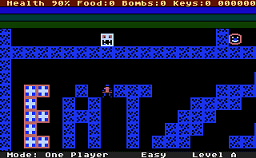 If you’d like to play the game, get a good Atari 800 emulator (I recommend Atari800WinPLus) or an SIO2PC cable to play it on a real Atari, then download the disk image. If you want different dungeon map packs, here they are: Pack 1, Pack 2, Pack 3, Pack 4, Pack 5, Pack 6. Finally, here’s a note on gameplay that’s not immediately evident: to use collected food, press 1 through 4 on the keyboard, where the number you push is the number of the player who wants to use stored food. The same goes for bombs, although you hold down the SHIFT key while pressing the number. You can also shoot bombs, of course, for immediate effect.
If you’d like to play the game, get a good Atari 800 emulator (I recommend Atari800WinPLus) or an SIO2PC cable to play it on a real Atari, then download the disk image. If you want different dungeon map packs, here they are: Pack 1, Pack 2, Pack 3, Pack 4, Pack 5, Pack 6. Finally, here’s a note on gameplay that’s not immediately evident: to use collected food, press 1 through 4 on the keyboard, where the number you push is the number of the player who wants to use stored food. The same goes for bombs, although you hold down the SHIFT key while pressing the number. You can also shoot bombs, of course, for immediate effect.
Have fun! Please feel free to share your comments on the game below in the comments section.
[Update: 11/17/2014 — I changed the SIO2PC link from sunmark.com (now long since gone) to a link to AtariMax that works. ]
